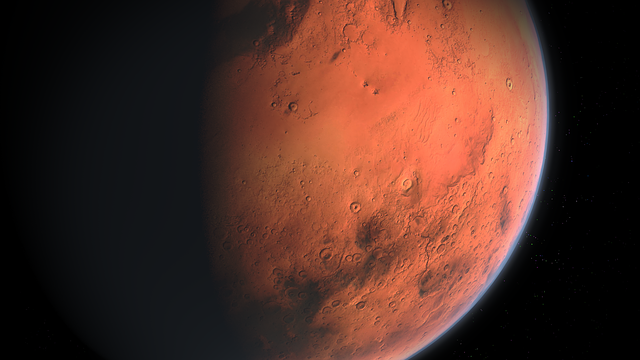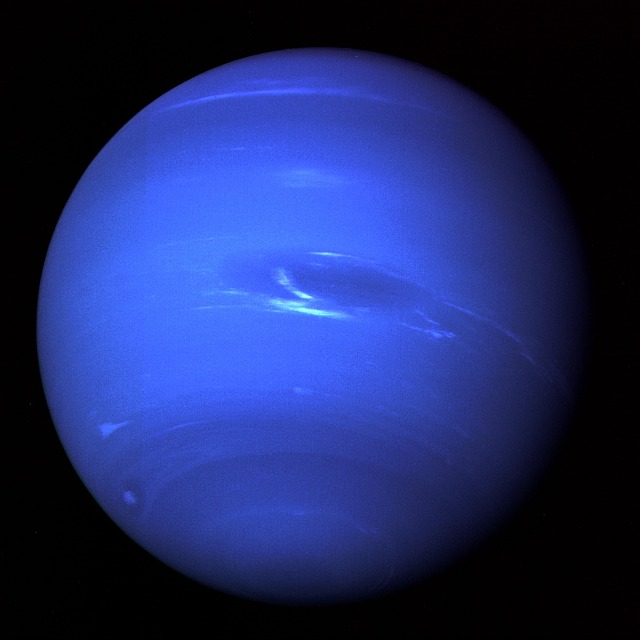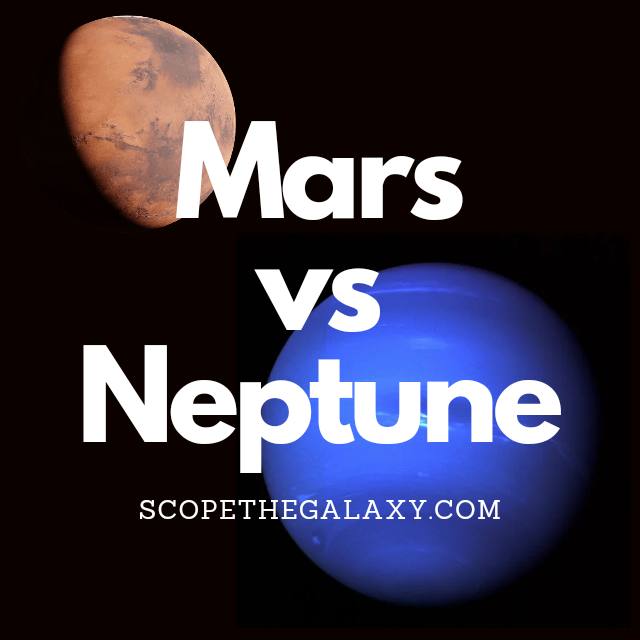*This post may contain affiliate links. This means we may make a commission if you purchase an item using one of our links*
The main differences between Mars And Neptune are that Mars is a red colored terrestrial planet whilst Neptune is a deep blue colored ice giant, Neptune is the 8th farthest planet from The Sun whilst Mars is 4th, Mars has 2 moons whilst Neptune has 14, Neptune is known to have winds that reach 2,000 km/h compared to Mars’ 113 km/h and Neptune is roughly 7 times bigger than Mars.
There are still numerous other differences and even the odd few similarities between Mars and Neptune so, continue reading if you want a more thorough breakdown of each planet.
What Is The Planet Mars?
Table of Contents

Mars, also known as the red planet and the celestial object that’s the front runner in our entire solar system to become a possible new home for us if terraformed. It is also the 4th farthest planet from the Sun and is one of 4 main line
terrestrial planets (not including Pluto) in our solar system.
This means that one year on Mars will take roughly 687 Earth days and a day on Mars is roughly the same as Earth at 24 hours and 37 minutes. It’s axial tilt is also very similar to that of Earth where it is positioned around 25 degrees to the right
It may not be the largest terrestrial world in our solar system as its diameter is only 6,779km but, it does have the most moons amongst the normal terrestrial planets here where two, namely Deimos and Phobos are currently orbiting the red planet.
Like Earth and the other terrestrial worlds, Mars does have an atmosphere, certainly more visible than that on Mercury but, when compared to Earth’s it is merely 1% of the volume on our home planet.
As a result it is more susceptible to larger debris striking its surface and is unable to trap in too much heat either. This is why it’s on the colder side with a temperature of around -65 degrees Celsius on average. On the contrary its core is significantly hotter at 1,350 degrees Celsius.
Mars is probably the most explored planet outside of our own, with a multitude of rovers like Sojourner (1997–1997), Opportunity (2004–2018), Spirit (2004–2010), Curiosity (2012–), and Perseverance (2021–) that have landed on the Martian soil to explore it.
Billionaires like Elon Musk and even Jeff Bezos are trying for an opportunity to genuinely have astronauts land on the Martian soil, possibly as early as 2029 so, Mars clearly has a lot interested in its terrain, as a potential substitute for Earth in the future.
What Is The Planet Neptune?

Neptune is the 8th farthest planet from the Sun and ranks among the bigger planets in our solar system. As the 8th farthest planet from the Sun, it does take Neptune a very long time to complete 1 orbital around the Sun.
This takes 165 years to complete which in comparison to the 16 hour 1 full spin around the axis is a massive difference.
In regards to its composition, Neptune is mostly made up of a thick swath of water closer to the center, methane, ammonia, hydrogen and helium molded around its Earth sized core.
As a result of the excess amount of methane and the inclusion of another undiscovered element within the atmosphere, Neptune’s color is a far deeper blue than the likes Uranus, which also has an abundantly methane based atmosphere.
The planet is 49,244km in diameter, making it roughly 4 times Earth’s diameter Earth, and would allow around 57 Earths to fit inside it. This also makes Neptune the 4th largest planet in our solar system.
Neptune is very cold mostly down to its distance from the Sun, where its atmospheric temperature sits between-220 to -230 degrees Celsius. Its core is far hotter coming in at 5,100 degrees Celsius and is the very likely cause for the liquid water present within the planet
Subsequently, the erratic temperature and gaseous composition of Neptune, is what constitute towards its turbulent behavior.
In fact Neptune has the fasted winds in our solar system, producing some that eclipse speeds of 2,000km per hour. The fastest winds on Earth would only be a fifth of these speeds at most.
At this moment in time we have discovered 14 moons orbiting Neptune and have also observed 5 thinner rings surrounding the ice giant.
How Are Mars And Neptune Similar?
Mars and Neptune don’t have too many similarities but, they do share the odd few, which in this case would include the following:
- Both planets orbit the Sun in a circular pattern
- Both have a hotter central core.
- Both are a spherical in shape.
- Both have multiple moons orbiting them.
Differences Between Mars And Neptune
In regards to their differences, they include the below:
- Mars has 2 Moons whilst Neptune has 14.
- Neptune is a gas based ice giant whilst Mars is a rocky terrestrial planet.
- Mars is composed of iron, nickel, and sulfur whilst Neptune is made of a thick soup of water, ammonia, and methane.
- Neptune has the fastest winds amongst the planets, achieving speeds of 2,000 km/h which is clearly much faster than Mars’ fastest winds of 113 km/h.
- Mars is the ‘warmer’ of the two planets where it has a surface temperature of around -67 degrees Celsius as opposed to Neptune’s temperature of between -220 to -230 degrees Celsius.
- Mars is the 4th farthest planet from the Sun whereas Neptune is 8th. As a result it takes Mars 687 days to complete an orbit around the Sun whilst Neptune completes an orbit in 165 years.
- A day on Mars takes 24 hours and 37 minutes whilst Neptune’s day is shorter taking 16 hours.
- Neptune’s axial tilt is 28 degrees whilst Mars has an axial tilt of 25 degrees.
- Neptune’s core temperature is more than that of Mars too where it is 5,100 degrees Celsius as opposed to Mars’ 1,350 degrees Celsius.
- Mars is red in color whereas Neptune is a deep blue color.
- Neptune is significantly bigger than Mars with a diameter of 49,244km as opposed to Mars’s diameter of 6,779km.
- Mars has mass of 6.39 × 10^23 kg whilst Neptune’s mass is 1.024 × 10^26 kg.
- Mars has a density of 3.93 g/cm³ whilst Neptune’s density is 1.64 g/cm³.
- Neptune’s gravity is stronger where it is 11.15 m/s² which is multiple times more than Mars’ gravity of 3.721 m/s².
Summary
Even though Mars and Neptune are part of the same solar system, besides a few common features like their spherical shape and their orbital pattern around the Sun, they differ significantly.
Whether it be their size, temperature or overall composition, Mars and Neptune don’t really match up in any of these regards and in turn are very distinct entities in the grand scheme of things.

